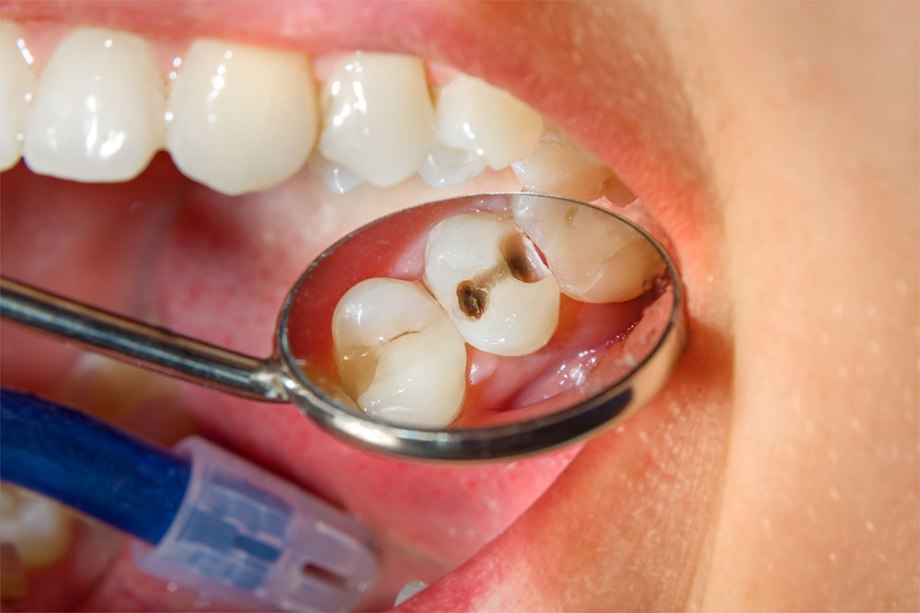
Gingivitis vs. Periodontitis: What’s the Difference?
We’ve all heard of gum disease, but not all gum disease is created equally. You might be wondering about gingivitis vs. periodontitis. What’s the difference, and why does it matter to you?
Gum disease, also known as periodontal disease, is the chronic inflammation and infection of the gum tissue in the mouth. It isn’t just painful; it can also wreak your health and devastate your smile. Most importantly, gum disease develops in two stages: gingivitis and periodontitis.
What is Gingivitis?
Gingivitis is the mildest form of periodontal disease. It’s your mouth’s warning sign that you must make changes to protect your teeth and gums from serious damage of periodontitis in the future. Fortunately, gingivitis is relatively easy to treat with the help of your local dentist near you, but it can have serious consequences if ignored.
Causes of Gingivitis: Gingivitis begins with plaque, a sticky film of bacteria that accumulates on and between the teeth. Sweet and acidic foods like soda and candy cause more plaque than nutritious choices such as carrots, almonds, and yogurt. Without regular oral care to remove plaque from the teeth, tartar develops.
Gingivitis stages: Tartar develops both above and below the gum line, and as it does, it irritates and inflames gum tissue. This causes gingivitis, the first stage of gum disease. You may have gingivitis if you’re experiencing any of these uncomfortable symptoms:
- Bright red gums
- Tender, painful gums
- Bleeding from the gums, especially when brushing and flossing
- Chronic bad breath
- Increased tooth sensitivity
- Tooth decay and cavities
Periodontitis Gingivitis difference : If tartar continues to accumulate without professional treatment from a dentist, it quickly progresses into the more severe form of gum disease called periodontitis.
What is Periodontitis?
Periodontitis isn’t nearly as reversible and easy to treat at gingivitis. This stage of gum disease is more advanced because plaque and tartar start growing below the gum line and producing toxins that stimulate a chronic inflammatory response within the body.
This type of inflammation tells the body to attack itself and break down the tissues and bones that support the structure of your mouth. As a result, untreated periodontitis causes the gums to separate from the teeth and form pockets that quickly become dangerously infected. Over time, your teeth become loose and fall out.
More than 64 million American adults have periodontitis marked by the following symptoms:
- Pockets between the gums and the teeth
- Recurring gum abscesses
- Loose and shifting teeth
- Receding gums
- Tooth loss
- Degeneration of the jawbone
Only a dentist has the tools and training necessary to treat periodontitis and help restore healthy gum tissue.
Health Risks of Untreated Periodontal Disease
If you’re experiencing signs of gingivitis or periodontitis, don’t assume that brushing and flossing at home will reverse the problem. It’s critical to see a dentist for treatment in order to avoid these complications.
Bone Loss in Jaw
Periodontitis destroys and eats away at your jaw bone. This happens when aggressive bacteria combine with the white blood cells signaled by chronic inflammation to break down everything in their path: first connective gum tissue, then the underlying jaw bone and ligaments.
Infection
Chronic inflammation makes it possible for millions of bacteria to hop into the bloodstream and travel throughout the body. This makes them extremely dangerous because they can trigger infection anywhere, even your heart or lungs.
Heart Disease
Oral health isn’t always associated with heart health, but the two are closely connected. Research suggests that periodontal disease may cause a 19% increase in the risk of cardiovascular disease! This risk level surges to 44% among adults 65 or older.
How to Protect Your Mouth From Gum Disease
Prevention is the best solution, but if you are already experiencing signs of gum disease, only your dentist has the tools and expertise needed to fully combat the plaque, tartar, and bacteria lurking in your teeth and gums.
This process is called scaling and root planing. It achieves a deep and thorough cleaning above and below the gumline in order to remove all triggers of gum disease.
Local anesthesia is used to minimize discomfort while your dentist scrapes and removes plaque, toxins, and tartar from your teeth and root surfaces. At the end of the treatment, your dentist smoothes the rough area on your roots’ surfaces to stop bacteria and tartar from accumulating under the gumline. This gives your gums the opportunity to heal, reform, and reverse periodontal disease.
Root scaling and planing are considered the “gold standard” of treatment for chronic periodontitis. Although they can’t reverse recurring gum infections entirely, they can control existing damage and stop excessive decay and gum erosion in the future.
Don’t wait to call your Encinitas, CA dentist for treatment and support. In the debate of periodontitis vs gingivitis, and when does gingivitis become periodontitis both are bad news for your mouth, and both demand comprehensive dental attention and treatment.
The team at Ablantis Dental Clinic in Encinitas, CA is here to provide the gum disease treatment you need to protect and restore your smile. You deserve to keep your smile, and Ablantis Dental Clinic is here to make that possible! Call us today to make an appointment and learn more.



